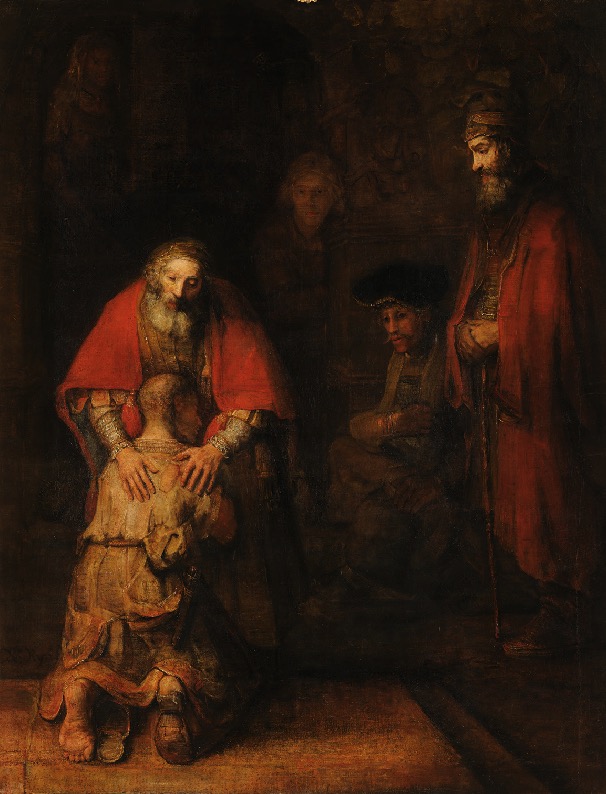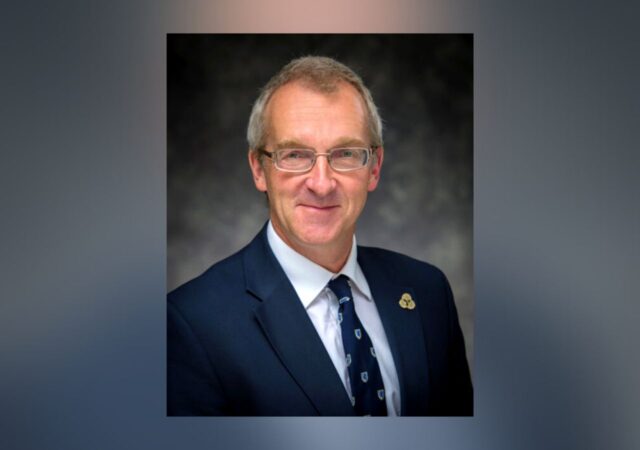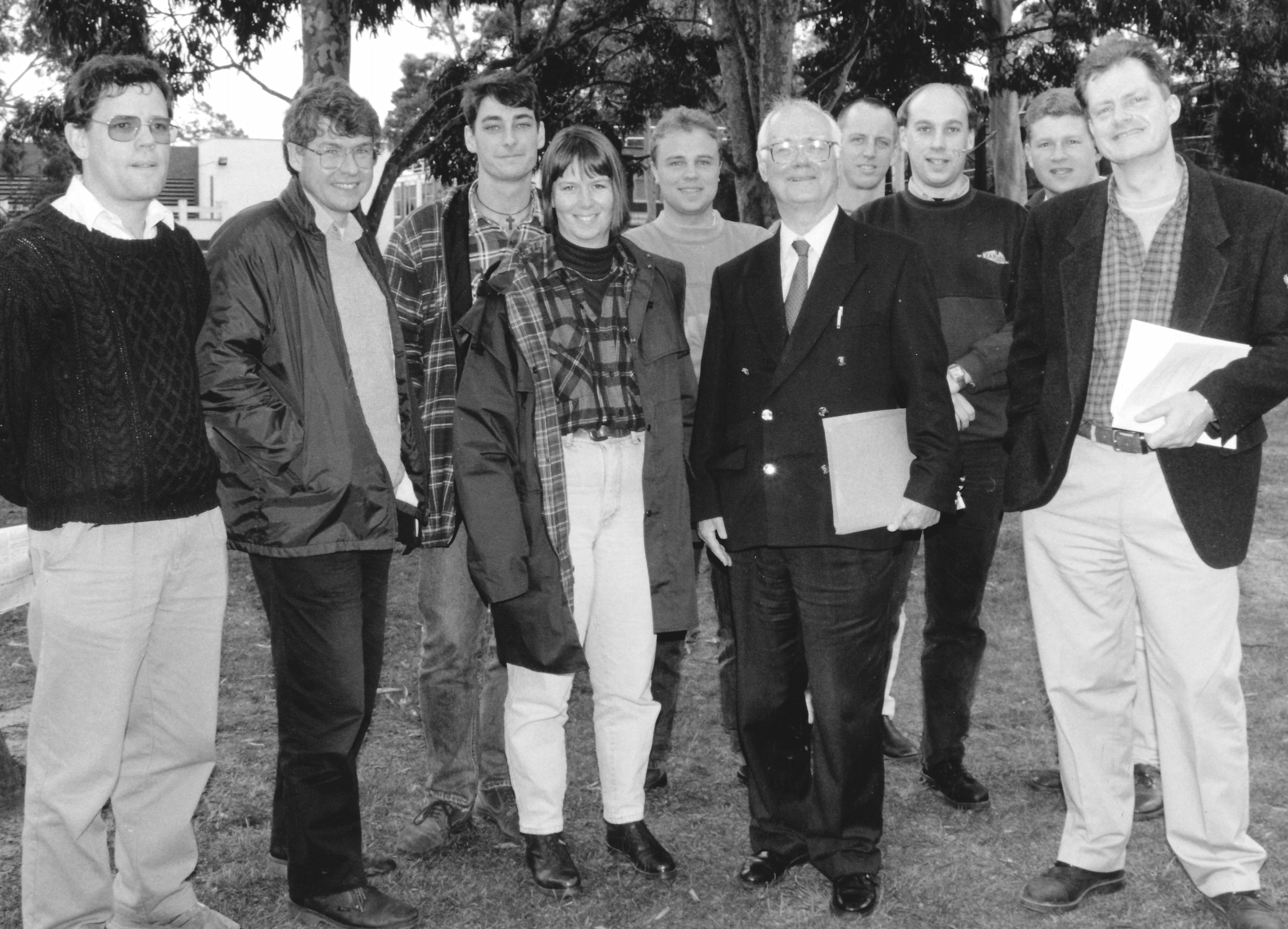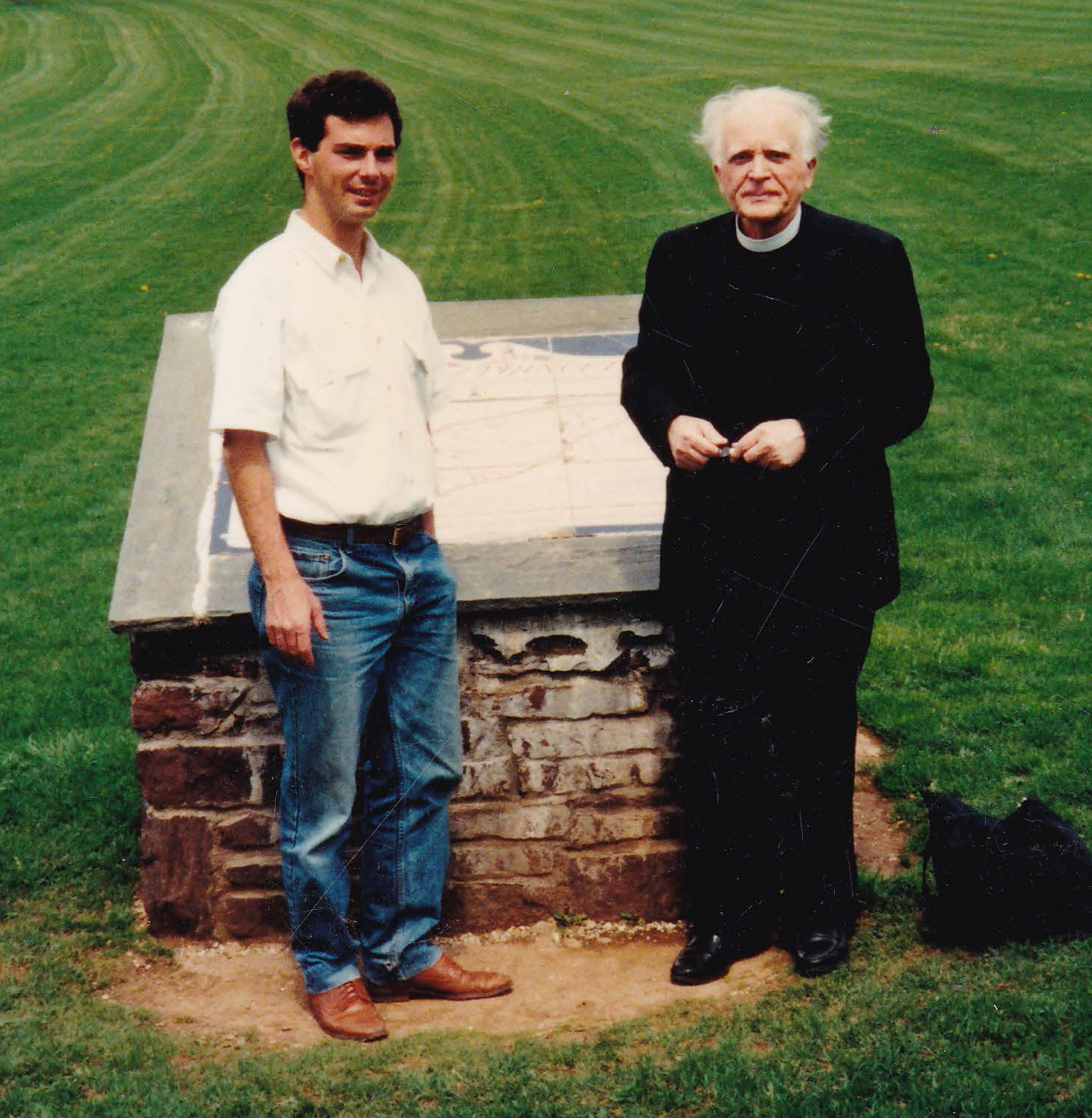

It is Easter. And I am an addiction physician. What has addiction medicine to do with the atonement?
I submit that addiction is a disease of relationships, and I deal with the mending of fractured relationships daily. When one of my patients read Luke 15, the three parables of the lost being found, he commented to me, “Doc, when I read that story I f****g cried.” Atonement is about mending the central relationship—that between God and humankind. God took the initiative in bringing rebellious humans back into communion with him.
Addiction is about dealing with broken people who need grace, but who also cannot be indulged. Enabling is a common phenomenon in addiction care whereby a well-meaning relative protects the patient from the consequences of their addiction, and so the problem continues. That is not to the patient’s long-term benefit. Maintaining standards, yet accepting people. Sounds familiar? Sounds Gospel to me.
The other day I interviewed a refugee from Muslim Africa. He had been homeless in Australia for two years, kicked out by his family in Australia. He had been living on the streets, drinking alcohol and smoking dope. Slowly, with a lot of social support he was cobbling his life back together. I asked him if he thought of going to a mosque, but he was too ashamed to go to worship. He would have to wait and be good before he could be accepted. I initially thought, “Typical Islamic doctrine of works,” until I remembered an Indian Christian friend who became embroiled with prostitution and was too ashamed to return to our church in Australia. Grace, forgiveness, loving the broken into restoration … these are the elements of atonement practice for me.
A considerable number of my patients have suffered some form of abuse, whether emotional, physical or sexual. The pain is only temporarily eased by alcohol and or other drugs. Such avoidance does not help recovery. Close to the surface of their pain are major atonement issues such as fear, shame, disgust, outrage, injustice, the desire for vindication, even vengeance, a desire to be clean and an ambivalent love/hate relationship towards the abuser, especially if the abuser is a parent or partner. These feelings are even more acute when the abuser is a church leader, for the question then arises as to why and how did God allow this to happen? Further, if the abuser is a priest, claiming to represent God to his people, what does that say about the sort of God this priest represents?
One of the recurrent themes in my practice is the compulsion to forgive. For many who are Christian, and who have been abused, there is enormous spiritual pressure to ‘forgive’ the perpetrator seventy times seven times. Handled wrongly, such a duty is little more than the process of denial by the victim, or worse, an acceptance that the victim was responsible for the violation. This buys into the damaged sense of self that the patient might already have. As a first step in recovery, there needs to be a clear delineation of responsibility for the wrong, a sense of justice before forgiveness. The victim needs to be vindicated, and responsibility for the abuse needs to be sheeted home where it belongs. Once again this is atonement practical—justice and forgiveness hand in hand, not in opposition.
I want to try and create some rapport between my clinical experience and the Christian gospel of the atonement. Various biblical scholars observe that Mark’s Gospel is a passion narrative with an extended introduction. They then proceed to expound the events of the passion as the doctrine of atonement, the cross is central, everything else a prelude to the cross. On another tack, John Dickson in his book Promoting the Gospel in his appendix I, What is the Gospel?[1] gives the standard systematic theologian’s answer that the gospel is a series of propositions about the person and work of Christ. These propositions were clarified by C.H. Dodd as the key features of the apostolic proclamation, the kerygma, and form the basis of the Apostles‘ Creed and the Nicene Creed. They centre on the birth, death, resurrection, ascension, and return of Christ.[2]But is it possible that the gospel is more than these two reductions?
What if the life of Christ is more than a probationary and testing period to see whether Christ would be sinless and thus a suitable sacrifice for the sins of the world? What difference would it make to our understanding of the gospel and of the atonement if we allowed the extended introduction to the passion narratives to contribute significantly to our understanding of what the gospel is, and to our understanding of the atonement? What would happen (in contrast to Dickson and Dodd, and various biblical scholars) if we described the gospel in the same way as the written gospels, Matthew, Mark, Luke and John? After all, although Mark’s Gospel focuses on the passion; there are at least 11 chapters before we reach Passion Week. Likewise, Matthew has 20 chapters, Luke over 19, and John 12 chapters.[3] These introductory chapters contribute significantly to our understanding of the atoning work of Christ.
These sections, first, provide actual vivid case studies of how Jesus as a person practically went about reconciling people to himself and to God. We have many stories, including the calling of Matthew, Zaccheus, the woman of Samaria, the rich young ruler, and many others. In none of these situations was there a particularly detailed theological discussion about atonement, but we do see the winnable ways of Jesus. The story of Zaccheus is a particularly vivid story of how an outcast was won back into the Kingdom of God. His story is not only a good illustration of restorative justice (Cole, p. 77), but also a story of how “salvation has come to that house, for the Son of Man came to seek and to save what was lost” (Luke 19:9). The same point is made with the calling of Matthew, where Jesus makes the point that he came, not to call the righteous, but sinners to repentance (Matt 9:12ff). This is the atoning Christ in action, confronting sinners and winning them to repentance and faith. This is salvation in practice.As a medical doctor, I am impressed with the close link between salvation and healing, between health and wholeness, and of healing with shalom. While we cannot expect physical healing as an automatic flow on from the cross, if we understand healing in the broader sense of salvation and shalom, then we would see the link that the church has had with its ministry of healing throughout the ages. Healing was a significant part of Christ’s ministry on earth. Jesus commissioned his disciples to pursue that three-fold ministry of preaching, healing, and exorcism, and up until the Enlightenment and the scientific revolution, when the divide between healing and the church began, there was a strong relation between the church’s ministry and healing. Further, health and death are linked, and part of salvation wrought by Christ is a new and less fearful approach to death and dying.
Secondly, studying the introductory chapters to the passion narrative allows us to learn more about how our Lord understood his atoning ministry and what he taught about his atoning work. The central theme of Jesus’ ministry is the coming of the kingdom of God. In anticipation, Israel was called to repent and believe. But the context of that ministry is compassion on those who came to Jesus who were ill with various diseases, severe pain, demon possession, epileptics and paralytics, and how Jesus healed them all. It is in the light of the crowds and their suffering that Jesus expounded the Beatitudes (Matt 4:23-5:1). Further, later in Matthew’s Gospel we read that Jesus had compassion on the crowds, because they were shepherdless. (Matt 9:36ff). Jesus vividly taught reconciliation, for instance in the moving parable of the prodigal son and the moving parable of the tax collector and the Pharisee (Luke 18:9). Interestingly, the tax collector, in calling for mercy, uses the hilasterion term (is that propitiation, expiation, or a mercy seat?) that has caused so much theological debate. Further, Jesus described the forgiven man as “justified” without describing the mechanism by which such justification would occur. Most interestingly, these touching stories were polemically addressed to Christ’s enemies.
Thirdly, if we looked at the first part of the gospels, we would understand more clearly the human reasons why Jesus died, insofar as he fell foul of the religious establishment of the day. His arrest was by no means a passive capture of an innocent teacher expounding benign blandishments to a group of naive followers. Jesus mounted a vigorous and sustained attack against the Pharisees, Sadducees, and Scribes over their hypocritical self-righteousness and lack of compassion. Jesus took the fight up to them. In some ways he inflamed the situation by purposely healing on the Sabbath and by his pointed attacks in his teaching. He was not the heavenly diplomat who sought to negotiate peace at any price; rather, his shalom was obtained at great cost, the cost of his own life.
Christian atonement is not some doctrine dreamt up in academic isolation but a fact forged in the violent, bloody, and fatal clash with the most well-developed religion of the day. It was taught in the early church by people used to being ostracised and excommunicated, who suffered all manner of violence in opposition to their teaching. Many gave their lives for the sake of the gospel. The atonement was forged against highly upright people who knew their Scriptures, fasted, prayed, and gave alms but whose paltry, compassionless righteousness was shattered by an encounter with the real righteousness of God coming in reconciling power to the broken, the lost, the sick, and the outcast, much to their shock, anger, and ultimately their hate. All this and more are taught by this broader approach to the gospel. Jesus did not just teach atonement, he embodied atonement.
But even more deeply, we get an overview of the divine strategy for winning the hearts and minds of humans back to God. God did not come in splendour and power to take over the might of Rome and install a new world order. Although Jesus did come as King, he came to Bethlehem, a remote corner of the Roman Empire. Further the Gospels specifically show it was not Jerusalem, but Bethlehem that was chosen. God did not come as a ruler, but as a carpenter, an itinerant preacher and healer, one who chose twelve ordinary men as his closest followers. God came and lived as a citizen of an occupied country, living freely even within those restraints. In the words of the Philippian hymn, he who was equal with God chose to set that aside. He took the form of a servant and became obedient to death by crucifixion. Once Christ had wrought our redemption on the cross, had risen and ascended, he sent his Holy Spirit on the church and so launched an extraordinary movement of common people (1 Cor 1:26–7) who confronted the might of Rome and in four centuries had survived and surpassed it. That was atonement, a heart and mind-winning movement wrought by Christ among ordinary people empowered to live out the kingdom values of a greater righteousness, love, and shalom.
Yet we must not underestimate the degree of theological sophistication of these common people. Paul wrote his letters to them, and many great revivals have occurred precisely because people have realised their spiritual bankruptcy before a holy God and that in Christ God has provided deliverance from the guilt and power of sin, because of his son’s death and resurrection.
One of the major themes of the gospel is the theme of freedom. God’s reconciling work is to make us free from our sin to choose God’s way. The salvation that God has wrought in Christ is a freedom from sin, fear, death, Satan, and the law and that where the Spirit of the Lord is, there is freedom. For patients with addiction, the gospel offers freedom from bondage and fear.
A leader in the science-Christianity dialogue, Sir John Polkinghorne, edited an interesting work on the theology of freedom.[4]It centres on the concept of kenosis in creation.
Traditionally kenosis has been used to describe Christ’s emptying of his status of being in the image of God, to taking on the form of a lowly servant even to the point of death on the cross, (Philippians 2:4-11) but there is a Christian tradition that sees kenosis occurring between members of the Trinity and also in relation to God and creation. Kenosis in creation is picked up from the Jewish concept of ZimZum, where the infinite God contracts and creates space to allow creation to be. Central to kenosis is the idea of freedom, whereby the creator allows the creation to be free to make itself. Creation is allowed to flourish. This freedom is quite the opposite of strict control which renders the beloved a slave of the lover. So the universe is allowed to evolve freely. This gift of freedom is an important gift that we can give each other and quite different from the fearful control so often exercised in evangelical circles, and in addiction care.
But comments on the freedom of the gospel are not just recent. James Denny has a very strong section on freedom from the law in his book The Death of Christ. He comments that we constantly deny the sufficiency of the death of Christ by reintroducing customs as creeds or conventions which, while good in themselves tend to corrupt. Instead he argues for a “liberty of responsibility towards the One who has loved to the point of death.”[5]
The gospel delivers believers from the power of sin. A palpable charge by critics against the narrow view of the atonement is that it is a narrow legal sleight of hand, a narrow justification which declares the guilty innocent without any further change in the sinner or in their behaviour. That creates people who continue to sin, and as such create lawlessness. Paul faced such a charge very early in his ministry, and not surprisingly spent a number of chapters in Romans (6–8) refuting such a charge. Full atonement moves people from death to life, from being in Adam to being in Christ, from a slavery to sin to a free service of the living God, from being under the power of the flesh to being empowered by the Holy Spirit. The atonement truly frees us from both the guilt and power of sin.
I alluded in the opening paragraphs to the fact that one of the key issues for me practically is the issue of forgiveness. Simon Wiesenthal, the famous Nazi hunter wrote a book about his experience in one of the prison camps.[6] As a prisoner he was suddenly called out to sit with a dying SS soldier who felt it necessary to confess his mis-deeds to a Jewish person. He asked Wiesenthal for forgiveness before he died, but all Wiesenthal could do was to listen to him and give him silence. Subsequently, about 30 different thinkers including the Dalai Lama and Desmond Tutu were asked to respond to that story. It would have been good to have seen an evangelical response. It may be going beyond the brief of biblical theology, but the challenge is there for a thoughtful evangelical response on the nature, extent, and limitation of forgiveness.
We have explored how the atonement is practically expounded in the body of the Gospels, and how one of its key issues is the gift of freedom. But the atonement is not just a conceptual map. It is God’s answer to the dilemma facing each of us, prisoners of our sin; guilty and powerless. It is God’s solution, marrying justice and mercy, righteousness and peace. It shows the costly lengths God would go to save humans who cannot save themselves, and saves humans without compromising God’s righteousness. In the end it is a sweet doctrine leading to our transformation in hope and therefore to gratitude, worship, embodiment, and proclamation.














